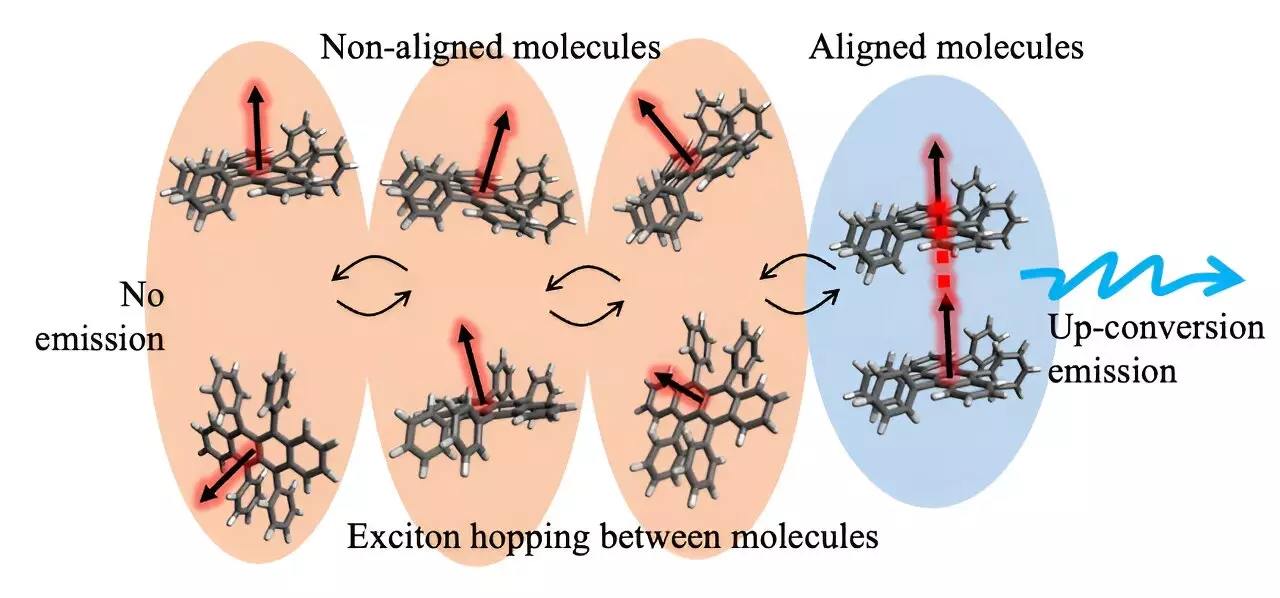In a groundbreaking discovery, researchers at Kobe University have unveiled the key to efficiently combining two low-energy photons into one high-energy photon. This finding holds immense potential for the development of more efficient photovoltaic (PV) cells, OLED displays, and even anti-cancer therapies. The process of up-conversion involves absorbing light and transferring its energy among molecules as triplet excitons, ultimately resulting in the emission of a high-energy photon. However, the mechanism behind the efficient combination of two triplet excitons remained elusive, posing a significant challenge in the development of materials for up-conversion.
Lead by photoscientist Kobori Yasuhiro, the research group focused on the electron spin states of moving and interacting excited states as a crucial factor in the up-conversion process. By studying a thin-film solid-state material that allowed for the observation of electron spin properties and sufficient triplet exciton concentrations, the researchers made a significant breakthrough. They found that for the efficient transfer of energies to one light-emitting molecule, the electron spin states of two triplet excitons must be aligned, depending on the orientation of the molecules involved. This alignment requires the triplet excitons to move between molecules of various orientations, striking a delicate balance between mobility and speed.
A New Theoretical Model
By directly observing the evolution of electron spin states within solid-state up-conversion materials, the research group was able to develop a new theoretical model for understanding the electron spin motion and its relation to the up-conversion process. This model provides a guideline for designing highly efficient photon up-conversion materials based on a microscopic understanding of the process. With this knowledge, researchers can now explore the development of high-efficiency solar cells, as well as applications in photodynamic cancer therapy and diagnostics that utilize near-infrared light for optical up-conversion without causing harm to the human body.
The implications of this research are far-reaching, offering a novel approach to improving the efficiency of various technologies that rely on up-conversion processes. By harnessing the knowledge of electron spin states and molecular orientations, researchers can design materials that maximize the conversion of low-energy photons into high-energy photons. This not only benefits the field of renewable energy by enhancing the performance of PV cells but also opens up new possibilities in medical applications such as cancer therapy.
The insights provided by Kobe University researchers pave the way for the development of advanced materials with unprecedented up-conversion efficiency. By shedding light on the microscopic mechanisms underlying the process, this research marks a significant step towards sustainable energy solutions and innovative medical treatments.


Leave a Reply